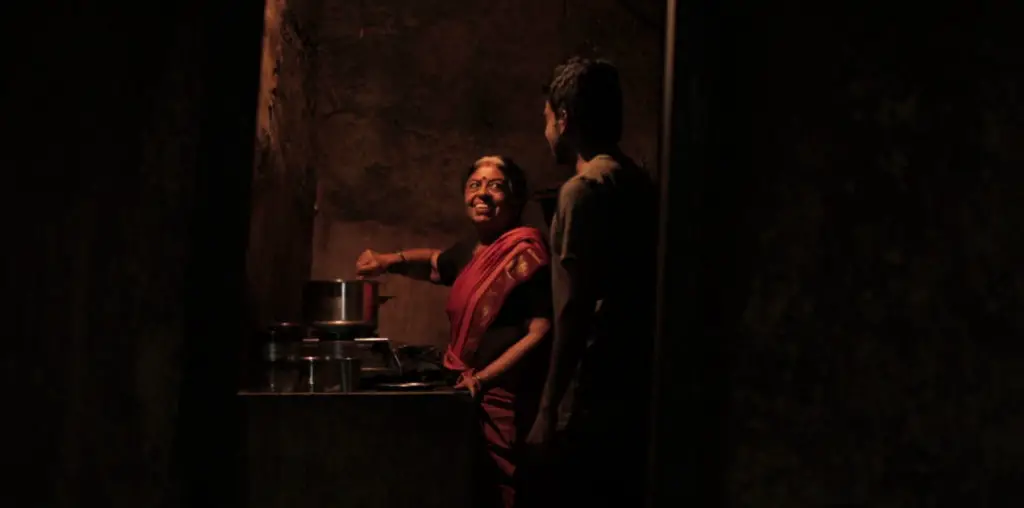
The New Authors of Italian Cinema fest is a very low-key mini-event. Sponsored by the Philadelphia-based organization, International House, and the Center for Italian Studies at the University of Pennsylvania, it provides an opportunity for some rare overseas gems, made by new and emerging Italian filmmakers, to be viewed, which otherwise would never get a release in the US. (Ligabue’s small town epic “Radiofreecia” and Taverelli’s cinematic tour de force “Un Amore” were real standouts in last year’s selection.)
Now in its second year, five very different films have been presented. The screenings kicked off sluggishly on Wedenesday, November 18th with Giuseppe Rocca’s “Pictures Deep in One’s Eyes” (“Lontano in Fondo Agli Occhi”). Set in Naples, in 1954, within a matriarchal family, a child (Andrea Refuto)anxiously awaits the return of his father. While the film combines the child’s fantasties with his innocent existence, “Pictures Deep in One’s Eyes” is somehow a rather mundane and cliched coming-of-age story.
Paolo Benvenuti’s “Costanza da Libbiano” is the story of a ‘witch’ being persecuted by the Catholic Church in the middle ages. This is a beautiful film to watch. Photographed entirely in black and white, Benvenuti’s use of large open spaces, long dark shadows, and deep focus, it lends an ominous fear to the film’s proceedings. The leading performance of Lucia Poli as Costanza is remarkable, with a depth of emotional range. The tortured facial expressions and initimate close-ups made it seem as if Benvenuti owed more than a little to Carl Dreyer’s “The Passion of Joan of Arc”. Like Dreyer, the film’s screenplay was taken straight out of the inquistion’s transcripts.
The crowds came in droves to see Roberta Torre’s “Tano de morire” (“To Die for Tano”), and while many critics are in love with it, I fail to see why. This is a rather appalling mafia-genre musical-comedy. As top-dog gangster Tano is killed, his family and associates mourn his death, while singing some very irritating musical numbers. Photographed garrishly in loud pastels in the style of Almadovar, with a sense of amateur trashyness and camp in the mold of Waters, Torre pokes fun of “Goodfellas” and “The Godfather”. Unfortunately, the film isn’t very amusing or stimulating in any way, instead, a thrown together hodge-podge , overly obnoxious and show-offy.
“Tre Storie” (“Three Stories”) is undoubtedly the most refreshing film of the bunch. Written and directed by Piergiorgio Gay and Roberto San Pietro, the film has a decidedly MTV “Real World”-ish flavor. Switching back and forth from candid self-revealing interviews and a narrative storyline, the film succesfully interweaves the stories of three heroin junkies, Wolf (Antonio Baldissarro), Giovanni (Marcello Di Gergorio), and Marina (Sandra Ceccacelli), through their days in rehab and beyond. Through the rehabilition process, they go through an exhaustingly intensive trial of hard work, learning to live off the land, growing their own food, and preparing their own meals. Each day the inmates hold a meeting and discuss their current problems. When Giovanni is criticized for working too hard and being insensitive to others around him, the groups decides on a punishment. Giovanni is not allowed to work, and while others paint the walls, he is forced to sit and watch. He learns the value of restraint, and the importance of humiltity.
“Three Stories” mixes happiness with tragedy, and romance with bitterness. This is the sort of film that has the heart, passion, and genuine simplicity that one identifies as being so quintessential to Italian Cinema.
Finally, there was “La Bella Vita” (“Living it Up”), a wonderful old-style romantic comedy. Paulo Virzi’s film centers around Mirella (Sabrina Ferilli). Mirella divides her time between being a housewife, cooking, cleaning and caring for her husband, a small, shy, slender steelworker named Bruno (Claudio Bigallo) and working as a supermarket cashier. A tall and outspoken sleazy talkshow host, Gerry Fumo (Massimo Ghini) notices Mirella, and they have an affair. Her infidelity ruins her marriage with Bruno, at a time when he needs her the most. He and his fellow Union workers are laid off when a big-time Japanese Industrialist steps in and takes over the steel factory.
Throughout it all, Mirella still loves Bruno. Gerry pleads with Mirella, asking her to leave Bruno. “I can’t” she says. “Bruno needs me. He’s weak. You’re strong”.
“La Bella Vita” is not merely about marriage and adultery, but it uses these themes to create a much broader portrait of the fragility of the Italian economy. When Bruno and his friends try to start their own steel factory, his father, an aging communist, is ashamed. He does not believe in capitalism, and is embarassed for his son for pursuing those goals.
At the same time, Gerry’s own career is hanging by a thread. His TV show only exists on his ability to attain sponsors. These are rough times, and Gerry’s stabilty and strength comes into question. “La Bella Vita” essentially is a story of courage and loyalty: it is in the face of defeat that we truly come to know people best.

